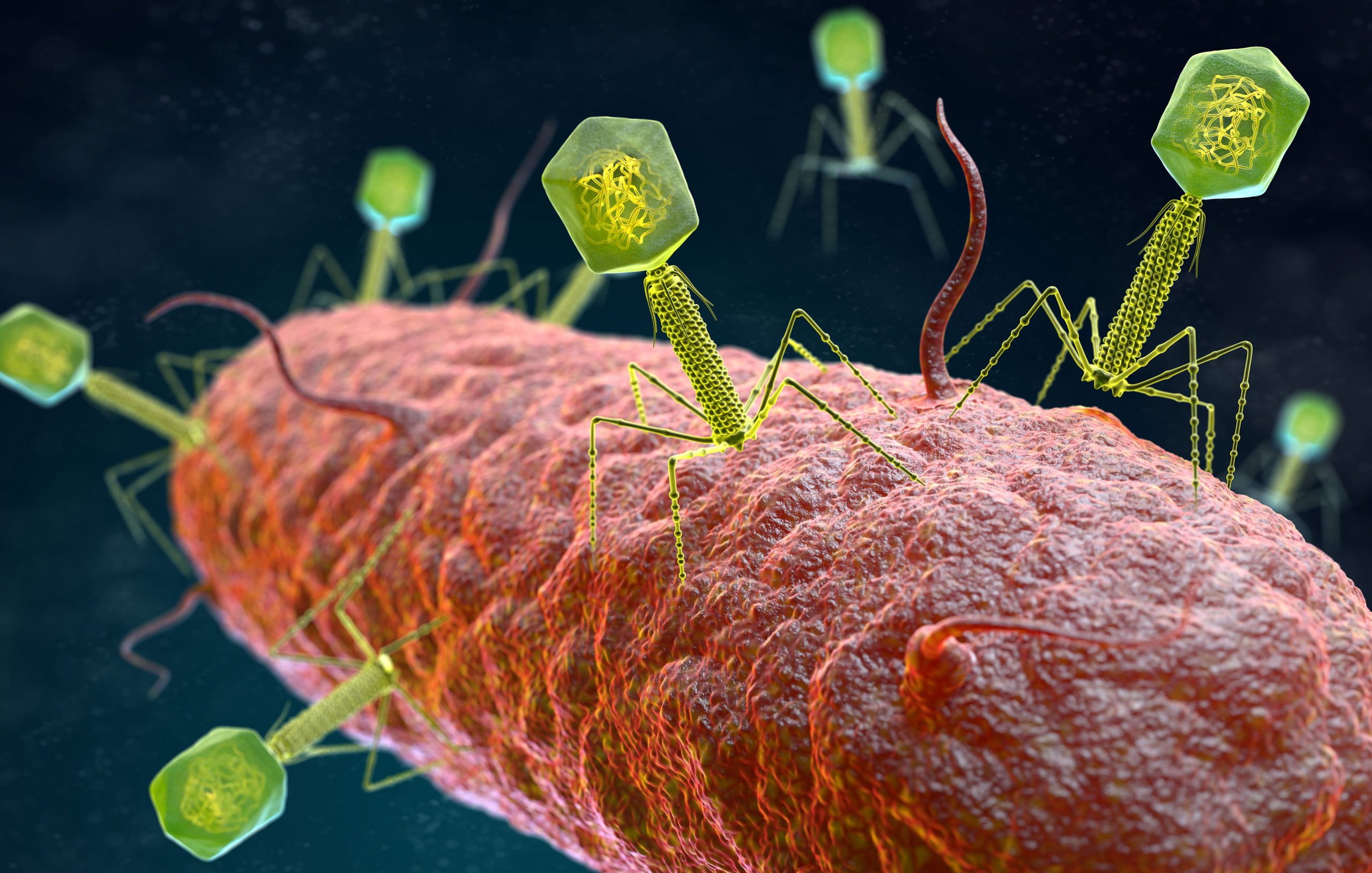
The field of bacteriophage research presents a complex landscape, where scientists grapple with the intricate dynamics of gene transfer mediated by these viral entities. Bacteriophages are recognized for their pivotal role in facilitating lateral gene transfer among bacterial populations. This phenomenon, termed phage-mediated transduction, involves the transfer of genetic material from one bacterium to another by means of phage particles.
This process of gene transfer is not confined solely to bacterial hosts; rather, it holds broader implications for genetic evolution across diverse organisms. While phage transduction has historically been viewed as a mechanism that limits the practicality of phage therapy due to concerns about unintended gene transfer and potential implications for bacterial virulence or antibiotic resistance, it also serves as a driving force behind genetic diversity and adaptation within microbial communities.

Phage transduction can manifest in two main forms: generalized transduction and specialized transduction. In generalized transduction, phages inadvertently package random segments of bacterial DNA into viral particles during the lytic cycle, leading to their subsequent transfer to recipient bacteria upon infection. Conversely, specialized transduction occurs when specific regions of the bacterial genome adjacent to the phage integration site are incorporated into viral particles during the lysogenic cycle, resulting in the targeted transfer of these genetic elements to recipient cells.
What is horizontal gene transfer?
Horizontal gene transfer, also known as lateral gene transfer, is the process by which genetic material is transferred between organisms of different species. Unlike vertical gene transfer, which occurs from parent to offspring, horizontal gene transfer involves the exchange of genetic material between unrelated organisms.
Various mechanisms facilitate horizontal gene transfer, including transposons (mobile genetic elements), plasmids (extrachromosomal DNA), and bacteriophages (viruses that infect bacteria). These agents serve as vehicles for the transfer of genetic material between organisms, enabling the acquisition of new genetic traits.
Horizontal gene transfer can lead to the acquisition of beneficial traits by the recipient organism, allowing it to adapt to changing environmental conditions or to gain new capabilities. This process plays a significant role in ecological and evolutionary adaptation, as it promotes genetic diversity and innovation across different species.
Can a lytic phage aid horizontal gene transfer?
The phenomenon of lytic phages facilitating horizontal gene transfer, particularly through generalized transduction, is well-established in microbiology. During the lytic cycle of bacteriophages, which involves the replication and release of viral progeny, there can be instances where the phage mistakenly packages fragments of host genomic DNA into viral particles instead of its own genetic material. These fragments may include adjacent bacterial genes.
When these phage particles infect new bacterial hosts, they inject their genetic material, along with any packaged bacterial DNA, into the host cell. As a result, the transferred bacterial DNA can integrate into the recipient bacterial genome through recombination events, leading to the acquisition of new genetic traits in the recipient cell. This process can contribute to horizontal gene transfer between bacterial species and can have significant implications for bacterial evolution and adaptation.
Numerous studies have documented instances of lytic phages mediating horizontal gene transfer through generalized transduction in various bacterial systems, highlighting the importance of phages as agents of genetic exchange in microbial communities.
What is a prophage?
As this term appeared in the previous segment, it is better to discuss it. A prophage is a dormant form of a bacteriophage genome that has integrated into the genome of its bacterial host. During the lysogenic cycle of bacteriophages, the viral DNA integrates into the host bacterium’s chromosome or replicates as a plasmid within the bacterial cell. Once integrated, the prophage is replicated along with the host DNA during bacterial cell division.
Prophages can remain quiescent within the host genome for extended periods, being passively replicated along with the host DNA. In this state, the prophage does not produce new viral particles or cause cell lysis. However, under certain conditions, such as exposure to stressors or changes in environmental conditions, the prophage may be induced to enter the lytic cycle, leading to the activation of viral gene expression, the production of new viral particles, and ultimately, the lysis of the host cell.
Prophages are relatively common among bacterial hosts, and a single bacterial genome can harbor multiple prophages. These integrated phage genomes contribute to the genetic diversity of bacterial populations and can play roles in bacterial evolution, pathogenicity, and adaptation to environmental changes.
Why is horizontal gene transfer considered bad?
Horizontal gene transfer is not inherently “bad,” but it can have both positive and negative consequences depending on the context. In the case of bacteria, horizontal gene transfer plays a crucial role in their adaptation and evolution, allowing them to acquire new traits such as antibiotic resistance, virulence factors, and metabolic capabilities. This ability to rapidly exchange genetic material contributes to the resilience and diversity of bacterial populations.
However, from a human health perspective, horizontal gene transfer can pose challenges, particularly when bacteria acquire genes that confer resistance to antibiotics or enhance their pathogenicity. Antibiotic resistance is a significant public health concern worldwide, as it limits the effectiveness of antibiotics in treating bacterial infections and increases the risk of treatment failure and the spread of drug-resistant pathogens.
In addition to antibiotic resistance, horizontal gene transfer can also contribute to the spread of virulence factors among bacterial pathogens, leading to more severe infections and increased disease severity. This can complicate efforts to control infectious diseases and may result in more severe clinical outcomes for affected individuals.
Effects of horizontal gene transfer to a bacteria
Some genes have no effect, but some can be very beneficial to the new host. The following are the two noticeable effects that may be caused by a horizontal gene transfer.
- Transfer of resistance
- Transfer of pathogenicity
- Toxin genes transfer
how can bacteriophage DNA be spread from cell to cell without causing cell death?
Indeed, the lysogenic life cycle of bacteriophages enables the spread of phage DNA from cell to cell without causing immediate cell death. During lysogeny, the phage DNA integrates into the host bacterial genome, becoming a prophage. This integrated viral DNA is then replicated along with the host DNA during cell division, ensuring that each daughter cell inherits the viral genome. In this way, the phage DNA is spread from cell to cell as the bacterial population grows and divides.
Importantly, during lysogeny, the prophage remains dormant and does not produce new viral particles or cause cell lysis. Instead, it is passively replicated along with the host DNA, allowing the bacteriophage DNA to persist within the bacterial population without causing immediate harm.
Under certain conditions, such as exposure to stressors or other environmental cues, the prophage may be induced to enter the lytic cycle, leading to the production of new viral particles and cell lysis. However, until such induction occurs, the presence of the prophage allows for the stable maintenance and dissemination of bacteriophage DNA within the bacterial community.
Thanks for visiting The Phage. if you have liked it and you don’t want to miss out, feel free to subscribe to our newsletter by clicking here
Read more
- Marcelli, B., Karsens, H., Nijland, M., Oudshoorn, R., Kuipers, O. P., & Kok, J. (2020). Employing lytic phage-mediated horizontal gene transfer in Lactococcus lactis. Plos one, 15(9), e0238988.
- Schneider, C. L. (2021). Bacteriophage-mediated horizontal gene transfer: transduction. Bacteriophages: biology, technology, therapy, 151-192.



[…] for therapeutic purposes has been hindered by various challenges, including narrow host ranges, carrying undesirable genes (i.e resistance and virulence) and the risk of bacterial […]